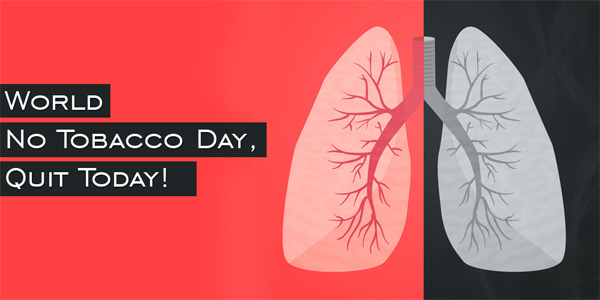“Just one puff won’t make a difference”..
“After all you must try everything once at least”..
“Come on don’t be a loser”..
Haven’t we heard these lines amongst young adults, especially during college days?
It’s the thrill to try something new, copy a friend or peer pressure which makes them try their first cigarette. Little do they realise that many times a onetime thing turns into a habit and sometimes an addiction. Surprisingly most people start having their first tryst with tobacco in their late teens. The average age of initiation of tobacco use in India is 19 years and three months.
World No Tobacco Day (WNTD) is observed around the world every year on May 31. It is intended to encourage a 24-hour period of abstinence from all forms of tobacco consumption around the globe. Across the world various events are conducted to raise the awareness about the hazardous affects of tobacco consumption. Tobacco currently leads to nearly 6 million deaths each year worldwide, including 600,000 of passive smokers – exposed to second-hand smoke. Tobacco includes not only cigarettes but also gutka, hookah and e-cigarettes.
This year on World No Tobacco Day World Health Organisation (WHO) is calling on all countries to get ready for plain packaging of tobacco products. It means to prohibit the use of logos, colours, brand images or promotional information on the packaging. The brand name and the product name can be displayed but only in a standard colour and font size. This reduces the overall attractiveness of the product.
The estimated number of tobacco users in India is 27.5 crore, with 16.37 crore users of smokeless tobacco, 6.9 crore only smokers and 4.23 crore users of both smoking and smokeless tobacco. A number of organisations, including the Indian Medical Association, have appealed to the Delhi government to observe a dry tobacco day on May 31 by completely banning sale of all tobacco products on that day.
All smokers are aware that smoking is bad for their health but they often downplay the gravity of the issue.
Some benefits of quitting smoking:
- Immediately after quitting smoking, heart rate and blood pressure, which is abnormally high while smoking, begin to return to normal.
- Within a few hours, the level of carbon monoxide, which reduces the blood’s ability to carry oxygen, begins to decline.
- The workload on the heart is decreased and cardiac function is improved.
- Food tastes better, and your sense of smell returns to normal.
- Within several months of quitting, you experience significant improvements in lung function.
- In one year, your risk of heart disease, heart attack, and stroke is halved.
- In five years, many kinds of cancer, including lung, larynx, mouth, stomach, cervix, bladder, show decline in risk, and that decline approaches the risk of someone who has never smoked.
- Within 10 to 15 years, risk of lung disease, including bronchitis and emphysema, are decreased.
- Conditions such as cataracts, macular degeneration, thyroid conditions, hearing loss, dementia, and osteoporosis are positively affected.
- Nerve endings in the mouth and nose begin to regenerate, improving taste and smell.
- Medications may work better, enabling some to be taken in decreased doses.
- You’ll have decreased risk for impotence and infertility.
- Years will be added to your life: people who quit smoking, regardless of their age, are less likely than those who continue to smoke to die from smoking-related illness.
We have given you enough reasons to quit smoking, haven’t we?
So if you have been thinking of quitting, today is the day. There are many NGOs and counselling centres available to deal with the withdrawal symptoms of smoking. It’s the best decision for yourself and your family, Quit today.


